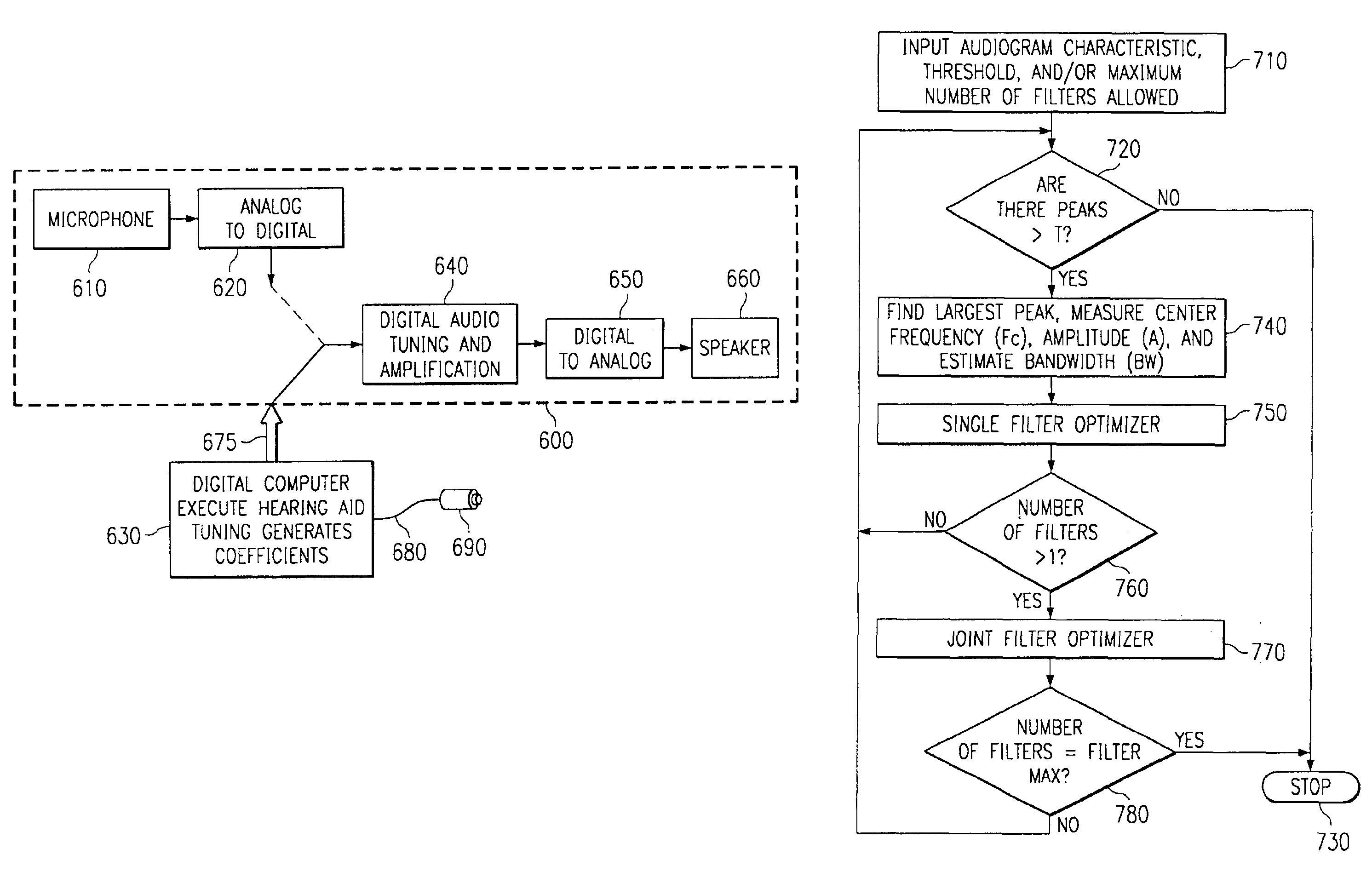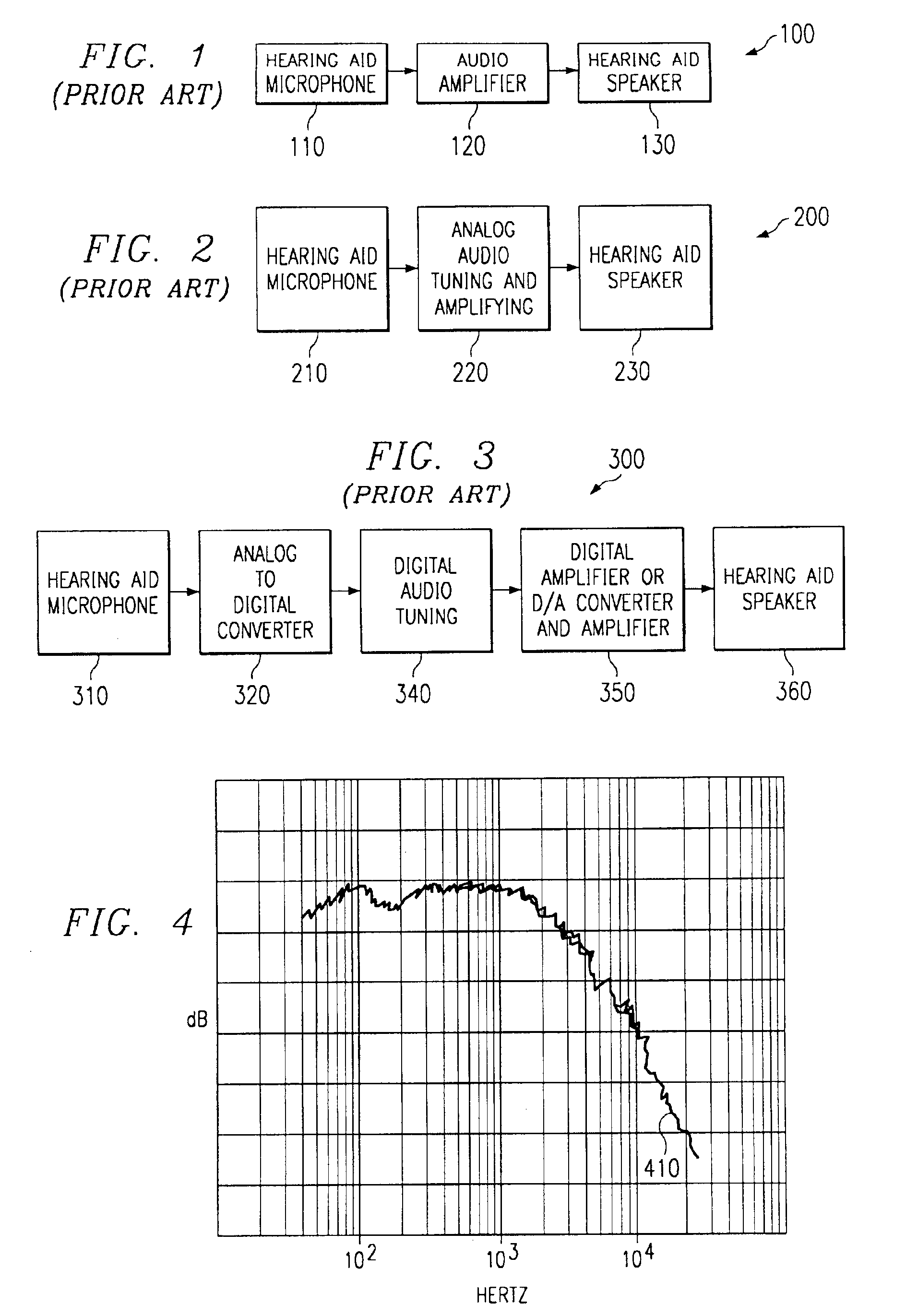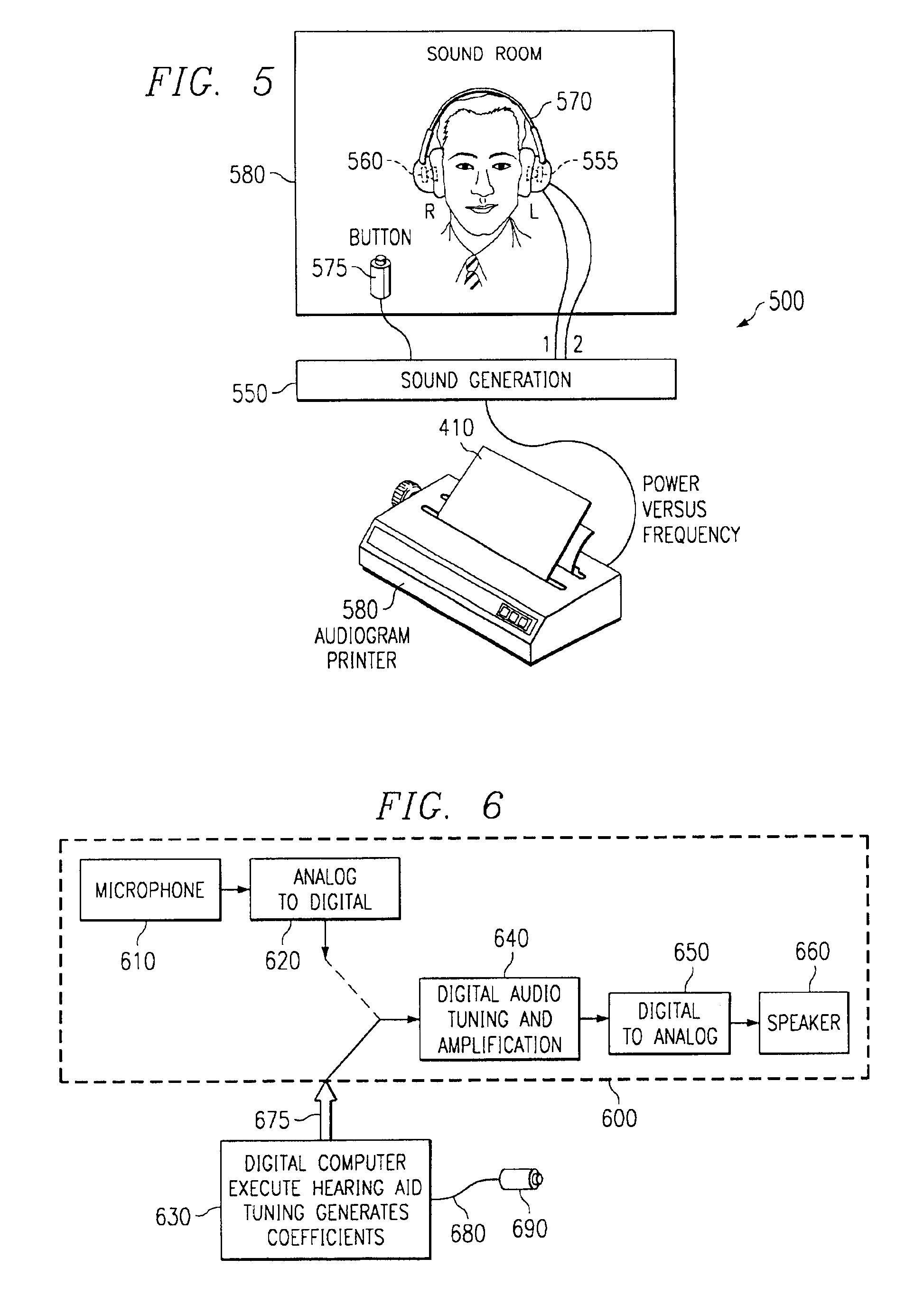Method and apparatus for tuning digital hearing aids
- Summary
- Abstract
- Description
- Claims
- Application Information
AI Technical Summary
Benefits of technology
Problems solved by technology
Method used
Image
Examples
Embodiment Construction
A typical prior art hearing aid 100 is shown in FIG. 1. The hearing aid 100 is comprised of a microphone 110, audio amplification 120, and a speaker 130. Early hearing aids provided amplification across the audio spectrum. However, there was generally an attempt to pick the center frequency of the amplifier to coincide with the frequency at which the wearer was most likely to be experiencing the most impairment. These early single frequency systems were followed by improved systems which included two, three or even more filters so that specific frequency bands in the hearing aid could be amplified to different levels.
Previously, such systems have been completely analog as is shown in the analog hearing aid 200 of FIG. 2. In FIG. 2, an analog hearing aid receives an audio input from a microphone 210 which provides an electrical signal to the analog audio processing function 220, which allows the amplification of selected frequency bands to be adjusted. The signal output from the anal...
PUM
 Login to View More
Login to View More Abstract
Description
Claims
Application Information
 Login to View More
Login to View More - R&D
- Intellectual Property
- Life Sciences
- Materials
- Tech Scout
- Unparalleled Data Quality
- Higher Quality Content
- 60% Fewer Hallucinations
Browse by: Latest US Patents, China's latest patents, Technical Efficacy Thesaurus, Application Domain, Technology Topic, Popular Technical Reports.
© 2025 PatSnap. All rights reserved.Legal|Privacy policy|Modern Slavery Act Transparency Statement|Sitemap|About US| Contact US: help@patsnap.com



